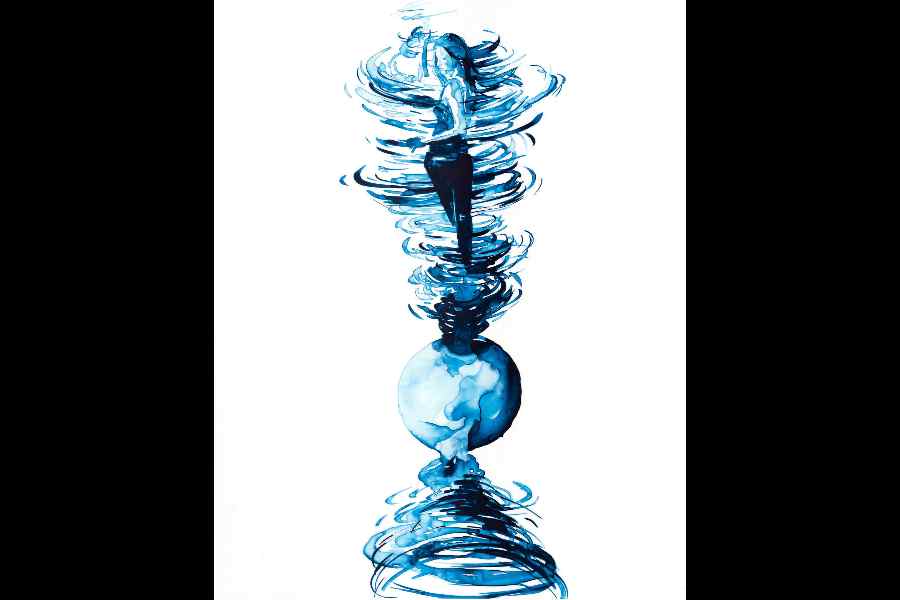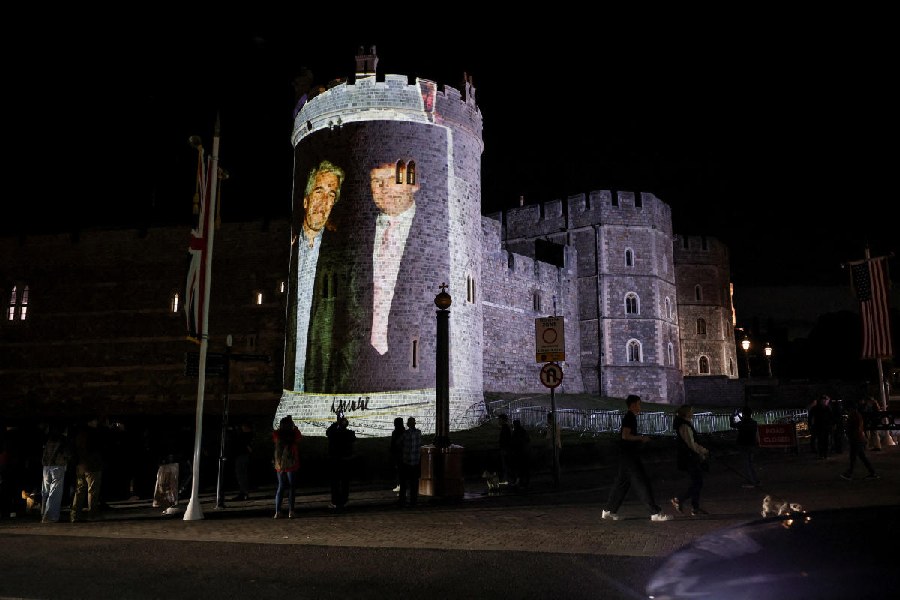If you have ever wondered what it might feel like to be sucked into a black hole — twisted, stretched, confused, doomed — you could do worse than trip through The Warped Side of Our Universe: An Odyssey Through Black Holes, Wormholes, Time Travel, and Gravitational Waves, a collaborative book project by Kip Thorne, a physicist at the California Institute of Technology, and Lia Halloran, a visual artist and chair of the art department at Chapman University in Orange, California, US.
Thorne brings impressive credentials to the task. In 2017 he won the Nobel Prize in physics for his work on the Laser Interferometry Gravitational-Wave Observatory, or LIGO, which discovered space-time vibrations resulting from the collision of two distant black holes. He was also the executive producer of the movie Interstellar. Halloran, who grew up surfing and skateboarding in the Bay Area, became obsessed with science after a high school internship at the Exploratorium in San Francisco, US.
The book consists of illustrations of what Thorne likes to call the “space-time storms” predicted by general relativity, Albert Einstein’s theory of gravity, alternating with his own explanations of the physics, which appear in verse. Many of the illustrations, which are in ink on drafting film, portray Halloran’s wife, Felicia, being whipped around, crushed and twisted by the forces of nature.
These portrayals include real, cutting-edge science based on work carried out in recent years and led by Thorne and Saul Teukolsky at Cornell University, US, in a project called Simulating eXtreme Spacetimes, or SXS. Gravitational waves were expected to stretch and squeeze space-time in orthogonal directions as they travel, but it turns out that they also twist space-time by a tiny amount. As Felicia falls into a black hole, her feet spin in one direction while her head rotates in the other; in Halloran’s drawings, this motion is represented by spirals that Thorne calls vortenses.
“The twisting has not been something that current technology is able to measure,” Thorne said in an interview, “whereas the stretching and squeezing is easy to measure.” In the case of LIGO’s colliding black holes, that measurable difference is a whopping four one-thousandths of the diameter of a proton.
Thorne and Halloran have been collaborating for more than a decade. She got her master of fine arts in printmaking from Yale in 2001 with a project based on Thorne’s book Black Holes & Time Warps: Einstein’s Outrageous Legacy. She met him years later at a party in Pasadena, California, US, and was “gushing,” she recalled. She invited Thorne to her studio, and they agreed to collaborate on elaborating on and celebrating our strange, Einsteinian universe.
Their first project was an article commissioned by Playboy magazine in 2010, at the invitation of Thorne’s former book editor, who worked there at the time. The piece, consisting of 6,000 words and nine paintings, was ultimately rejected because the images of Felicia did not meet the magazine’s standards for female beauty. “I hadn’t objectified the women enough,” Halloran said.
Thorne refused to publish without his collaborator. So the two soldiered on, working side by side in her studio, producing illustrations and text for what they began to call their little book. During an earlier portion of the pandemic, they were treated to an airborne tour of the LIGO antenna in Hanford, Washington, in a friend’s private jet.
“It was just a fine act of friendship and collaboration,” Halloran said. “Kip would come to my studio. We’d talk and my head would get fuzzy after trying to wrap it around all the fantastic things he was saying.” She added, “And then I would try to create something that could tangibly embody the kinds of concepts that he was describing.”
At one point, curious to see what they had, they asked a graphic designer friend to put together a prototype of their combined material. Thorne had been writing in prose, but as an experiment the designer broke the text up into stanzas. Thorne had an epiphany. “I really do polish the prose and I work at trying to make it flow nicely,” he said. “And I realised that it really was almost verse, and so I decided to attempt to turn it all into verse.”
He drew the line at trying to make it rhyme. But some would say that the poetry was already there, in Einstein’s maths.
NYTNS











